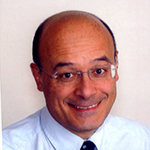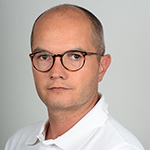European Society of Radiology: Could you please give a detailed overview of when and for which diseases you use cardiac imaging?
Alexis Jacquier and Louis Boyer: We use cardiac imaging on a daily basis for all types of cardiac pathology such as ischaemic cardiopathy, valvular heart disease, cardiomyopathy, congenital heart disease, rhythms disorders, ascending aortic pathology, pericardial disease and cardiac tumour assessment.
The repartition of our activity follows the repartition of the European MR CT registry (www.mrct-registry.org) with four main indications: suspected myocarditis, suspected ischaemic heart disease, confirmed ischaemic heart disease, suspected cardiomyopathy.
ESR: Which modalities are usually used for what?
AJ + LB: The French Society of Radiology (Société Française de Radiologie, SFR) and the French Society of Nuclear Medicine (Société Française de Médecine Nucléaire et Imagerie Moléculaire, SFMN) promote multidisciplinary best practice guidelines of appropriateness criteria in all subspecialties (Guide du bon usage – GBU online: http://gbu.radiologie.fr). The cardiac imaging chapter has also been endorsed by the French Society of Cardiology (SFC). These best practice guidelines of appropriateness criteria for MR and CT in cardiology are the reference used by our colleagues for best practice in imaging indications. The repartition of our activity in France is not significantly different from the European repartition (www.mrct-registry.org).
ESR: What is the role of the radiologist within the ‘heart team’? How would you describe the cooperation between radiologists, cardiologists, and other physicians?
AJ + LB: Since 2005, institutional relationships between the French Societies of Radiology and Cardiology have been published (J Radiol 2005, 86:111-2; Arch Mal Coeur Vaisseaux 20005,98(2): 166; J Radiol 2006,87:76): to summarise, indications for CT and MR are established by the cardiologist, the technical assessments are made by the radiologists in the department of radiology and finally the reports are written by the radiologist and sent to the cardiologist, in order to promote the best possible medical care.
ESR: Radiographers/radiological technologists are also part of the team. When and how do you interact with them?
AJ + LB: The radiological technologists are involved in image acquisition, quality assessment and image post-processing. In our congress of the national sub-society for cardiovascular imaging, a specific dedicated teaching and training programme is set out each year for radiographers.
ESR: Please describe your regular working environment (hospital, private practice). Does cardiac imaging take up all, most, or only part of your regular work schedule? How many radiologists are dedicated to cardiac imaging in your team?
AJ + LB: We are both academic radiologists. In our departments, cardiac imaging is mixed with all the other organ related imaging subspecialties. Cardiac imaging practitioners represent between 10 and 20% of the global medical staff. Cardiac imaging is performed on the same technical platform, shared between other radiological activities.
ESR: Do you have direct contact with patients and if yes, what is the nature of that contact?
AJ + LB: Before being radiologists we are medical doctors, and of course our goal is to increase the quality of medical services. The heart of our activities is taking care of the patient. We receive each patient personally after their exams to discuss the results of the examination and explain them.
ESR: If you had the means: what would you change in education, training and daily practice in cardiac imaging?
AJ + LB: The recent changes in the teaching and training curriculum in France should make it possible for all radiology fellowship and resident trainees to be trained in the first level of cardiac imaging. Some of them will develop a special interest in cardiac imaging during their fellowship and validate level 2 and 3 of our educational programme.
ESR: What are the most recent advances in cardiac imaging and what significance do they have for improving healthcare?
AJ + LB: All the aspects of cardiac imaging are important for patient care: the quality of the medical equipment is crucial to be able to offer the patients current best medical practice. This requires a strong policy of frequent renewal of MR and CT scanners. The development of coronary CT-scan is one of the important aspects, representing a major development in the management of ischaemic heart disease. But over and above this development, artificial intelligence will be a revolution in all aspects of cardiac imaging, acquisition, post-processing, reporting and computing results. It will probably be a change of paradigm in radiology.
ESR: In what ways has the specialty changed since you started? And where do you see the most important developments in the next ten years?
AJ + LB: Cardiac radiology using CT and MR is a young subspecialty, but in 15 years it has grown very fast in French clinical practice as well as in the international recommendations for best clinical practice. MR and CT are now established as reference standards for many aspects of cardiac pathology. The institutional establishment of rules between radiologists and cardiologists has contributed to promoting the development of that subspecialty with a clear definition of the role of each specialty.
ESR: Is artificial intelligence already having an impact on cardiac imaging and how do you see that developing in the future?
AJ + LB: Artificial intelligence is developing and has a bright future, but today its impact on daily practice remains limited. Artificial intelligence will be a very interesting tool for post-processing and many other aspects may also be of interest, but this will require an in-depth assessment to determine their value. As for other major innovations, the public will take a great interest in artificial intelligence to start with, but it will take some years to assess its real impact on clinical practice.
 Professor Louis Boyer is Head of the Radiology Department at Clermont-Ferrand University Hospital in Clermont-Ferrand, France. He is the past-president of the College of Professors of Radiology of France, and head of the SFR-SFC Interface (French Society of Radiology / French Society of Cardiology).
Professor Louis Boyer is Head of the Radiology Department at Clermont-Ferrand University Hospital in Clermont-Ferrand, France. He is the past-president of the College of Professors of Radiology of France, and head of the SFR-SFC Interface (French Society of Radiology / French Society of Cardiology).
 Professor Alexis Jacquier is a cardiac radiologist at the Radiology Department at Timone University Hospital in Marseille, France. From 2014 to 2017 he was chairman of the membership committee of the European Society of Cardiovascular Radiology (ESCR), and he was chairman of the Programme Planning Committee for cardiac imaging at ECR 2018. He is vice president of the French Society of Cardiovascular Radiology (Société Française d’imagerie cardiovasculaire, SFICV).
Professor Alexis Jacquier is a cardiac radiologist at the Radiology Department at Timone University Hospital in Marseille, France. From 2014 to 2017 he was chairman of the membership committee of the European Society of Cardiovascular Radiology (ESCR), and he was chairman of the Programme Planning Committee for cardiac imaging at ECR 2018. He is vice president of the French Society of Cardiovascular Radiology (Société Française d’imagerie cardiovasculaire, SFICV).